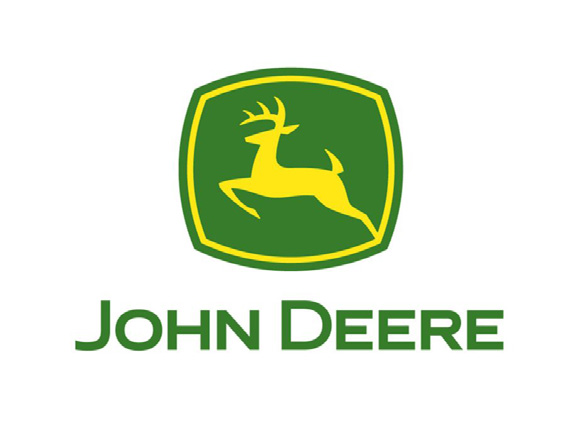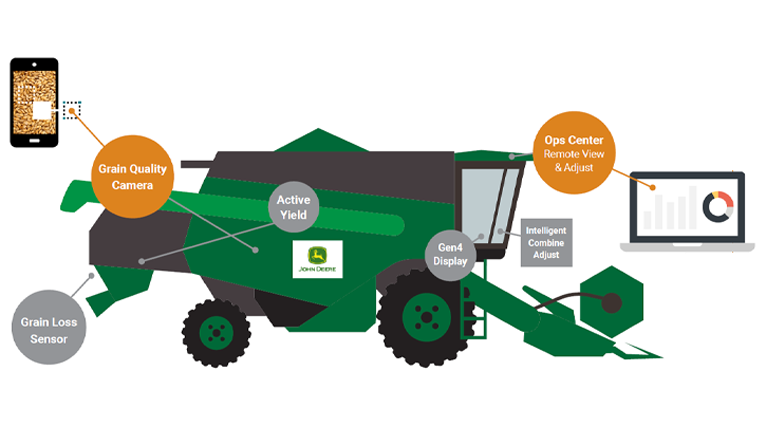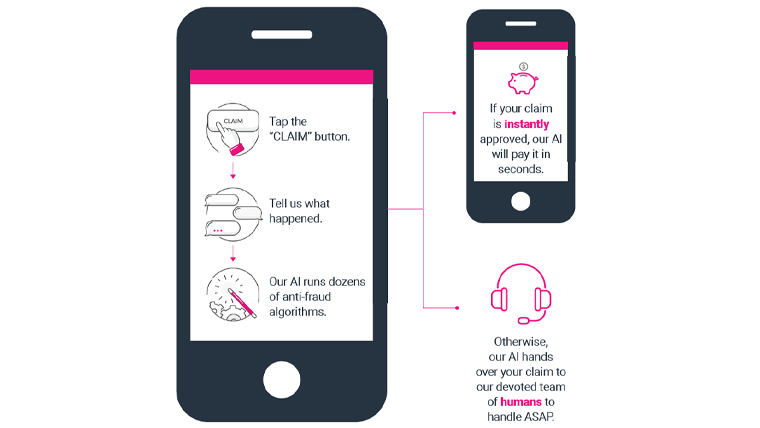
Is Tesla a car company or a technology company?
Why does Goldman Sachs employ around 10,000 software engineers (roughly one-quarter of its workforce)? 1
Who would guess that a company called Lemonade (NYSE: LMND) would turn the traditional insurance industry on its head?
How did coffee company Starbucks get to be a leader in mobile payment apps?

Adopting a bold, digital-first and customer-first strategy.

Using new insight and innovation to stay relevant and competitively strong.

Rethinking the way that your business interacts with its customers and employees.

Making existing products better and bringing new ideas to market.
For established companies, digital transformation protects against new disruptive competitors, drives more value for customers, enhances client experiences, and transforms your company. For new businesses, it provides an innovative, new way to transform an industry by disrupting existing business models and delivering what today’s customers want and expect.
Companies that are transforming today will be the ones that emerge stronger in a post-COVID world. The following real-world examples highlight how traditional companies have transformed their businesses and their industries, how an upstart is disrupting an industry with a new approach, and how even nonprofits must transform to achieve their missions in today’s digital world. Let the stories presented here inspire and encourage you to take the bold steps your company needs to thrive and grow in our digital world.
With its mobile app, ordering a burrito at Chipotle has never been so easy
Online ordering and curbside pickup keep customers returning to Beverages and More
Banking and investment customers can manage it all from their iPads with Charles Schwab
Chewy.com, majority owned by PetSmart, uses its data on customer buying trends to focus on the human experience of caring for pets
Amateur chefs can smoke a brisket like a professional with the app from Traeger Grills

True transformation is about exponential change. Turning a manufacturer of physical goods into a software company would be one example of thinking beyond incremental improvements and truly transforming the business. Just ask yourself why Siemens now employs more than 40,000 employees in digital jobs.2
Savvy manufacturers are embracing digital innovation. They’re jettisoning old beliefs about the value and utility of their products and are instead embracing design thinking to solve their customers’ problems. For many, the opportunity lies in the data that their products can generate and the insights that can be gleaned from that data — making the data sometimes more valuable to customers than the physical products themselves and creating new sources of recurring revenue for the manufacturer.
When you think of the internet of things (IoT), farm equipment isn’t likely to be the first thing that comes to mind. But John Deere is using the IoT, artificial intelligence (AI), machine learning and data analytics to help farmers improve their operations, grow their bottom line, and feed the world.
John Deere has been transforming from a pure equipment manufacturer into a data-driven technology company to deliver more value to farmers, helping them to collect data and harness it for improved farm management. The value created for farmers is improved productivity, increased efficiency, decreased downtime, and reduced costs to ultimately maximize profitability.3
Farmers aren’t the only ones who benefit. The data generated by its equipment can also be used by John Deere for predictive maintenance, relying on advanced data analytics tools to find patterns that indicate a machine or sensor problem. Remote diagnosis of problems saves the company time and money by reducing technician visits. The company can also use the data upstream to refine products for improved quality, as well as to inform new product and service development.4
The transformation is paying off. In 2019, the company recorded the highest net sales and revenues ($39.26 billion) in company history and the second-highest net income ($3.25 billion).5
While most people might not think of farmers as ones to embrace change and new technology, John Deere discovered that’s not true. “Farmers are an amazingly tech-savvy bunch … All of us know these new technologies are quite addictive and once they use them, they really like them,” says John Stone, SVP of John Deere’s Intelligent Solutions Group (ISG).6
Had the company assumed their customers weren’t ready to embrace change and advanced technology, John Deere wouldn’t be where it is today, which is at the vanguard of AI and agriculture.
Companies with equipment in use at customer sites — oil rigs, fire and safety equipment, elevators, manufacturing equipment, and more — are embracing digital transformation to revolutionize field service.
Digital-forward manufacturers are using technologies such as the IoT, AI, machine learning and predictive analytics to shift from reactive to proactive service with predictive maintenance. At the same time, they’re using mobile applications and geolocation technology to stay connected with their field technicians, and savvy companies are introducing augmented reality solutions to help field technicians be more productive and resolve issues faster.

 Greenidge Generation, a utility company in New York state, turned a down-market situation into a new line of business. When it couldn’t profitably sell all the electricity it was generating, Greenidge pivoted to cryptocurrency mining — taking its low-cost, surplus electricity and turning it into revenue.
Greenidge Generation, a utility company in New York state, turned a down-market situation into a new line of business. When it couldn’t profitably sell all the electricity it was generating, Greenidge pivoted to cryptocurrency mining — taking its low-cost, surplus electricity and turning it into revenue.
Across the industry, energy and utilities companies have embraced technologies such as smart grids and data analytics to achieve measurable improvements in efficiency for both production and consumption. While energy efficiency is better for the global good, it also has an economic downside for producers: lower demand and lower prices impact revenue.
If energy companies can no longer rely on traditional revenue streams to sustain their businesses, what’s next? Forward-thinking energy and utilities companies like Greenidge are already beginning to introduce innovative new operational models — powered by technology — to reimagine their business for a more energy-efficient world.
Greenidge opened its doors in 1937 as a coal-fired power plant. Starting in 2011, it became too expensive to operate and maintain business as usual. Seeing the opportunity to produce lower-cost, cleaner electricity, Atlas Holdings LLC purchased the plant in 2014, and by 2017, Greenidge was transformed into a power plant built for the 21st century, using low-emission natural gas to produce electricity.
The completion of the conversion coincided with a drastic shift in the wholesale electricity market in New York state. As the price of electricity dropped, it left the company searching for alternative ways to maximize investor returns. Then a forward-thinking board member gave the company the idea for mining bitcoin.
The company launched its new cryptocurrency mining business shortly thereafter, going from zero to a 15-megawatt cryptocurrency mining farm in less than three months. Today the company turns 20 megawatts of power into bitcoin, making it the largest energy company in the U.S. mining cryptocurrency.7
For Greenidge, a pilot project demonstrated the viability of mining cryptocurrency, yet the company still had significant blind spots in terms of how to automate, control, and document a mining operation. Instead of waiting to gain internal expertise, the company partnered with Armanino experts who understand both the mechanisms of how cryptocurrency mining works and the necessary accounting approaches and controls to minimize risk.
 For an industry that has always relied on data modeling and analysis for decision making, the insurance sector has remained stubbornly old-fashioned when it comes to adopting technology to transform the customer experience. While everyone knows that the model of insurance agents knocking on doors or customers visiting a brick-and-mortar office to get advice from their agent are long gone, insurance providers still struggle to deliver the kind of easy, fast and convenient digital experience consumers want and expect today.
For an industry that has always relied on data modeling and analysis for decision making, the insurance sector has remained stubbornly old-fashioned when it comes to adopting technology to transform the customer experience. While everyone knows that the model of insurance agents knocking on doors or customers visiting a brick-and-mortar office to get advice from their agent are long gone, insurance providers still struggle to deliver the kind of easy, fast and convenient digital experience consumers want and expect today.
No wonder digital disruptors are successfully luring customers away from traditional insurers. New contenders such as Lemonade, an American insurance carrier offering homeowners, renters and pet health insurance, are taking advantage of technology to reinvent not only the customer experience, but the basic model for insurance as we know it.
Powered by AI and behavioral economics, Lemonade launched in September 2016. The company’s approach promises zero paperwork and instant everything. How? By combining sophisticated technology with a brand-new approach to the insurance business. As a public benefit corporation and certified B-Corp, Lemonade reverses the traditional insurance model by donating its underwriting profits to charitable causes.
According to CEO and cofounder Daniel Schreiber, “Lemonade set out to make insurance loveable, but also to transform it from a necessary evil into a social good. We built an unconflicted business model powered by AI and behavioral economics, and invented the Lemonade Giveback, where leftover premiums are donated to charities our customers choose.” 8 Giveback is both a unique differentiator for Lemonade and the key to making the business model work by driving good customer behavior, creating what Schreiber calls “a virtuous cycle — a new Nash equilibrium — where aligned interests breeds honesty.”
So far, Lemonade’s approach is paying off. In July 2020, it achieved the best U.S. initial public offering debut of the year to date, with a gain of more than 140% and valuing the company at close to $4 billion.9
Insurance companies don’t typically have a direct relationship with consumers — brokers and agents have traditionally managed relationships with customers — making it difficult for carriers to improve satisfaction and foster customer loyalty. By going directly to consumers, Lemonade can put the customer (not the agent) at the center of everything it does. The result is an industry-leading Net Promoter Score.10


The lesson of the Lemonade story is that you can’t wait for upstarts to disrupt your traditional business model. You have to become your own disruptor. In the real estate industry, that’s exactly what Keller Williams Realty, Inc. did by redefining itself as a technology company.
Founded in 1983, Keller Williams is now the world’s largest real estate technology franchise, with more than 180,000 agents. To remain at the top of its industry, the company realized that it needed to disrupt its own business model before new entrants disrupted it first. To do this, the company announced that it would invest $1 billion in developing its own technology platform in the cloud with talent amassed in its KW Labs, the innovation hub of Keller Williams.
The Keller Cloud is a powerful suite of tools that work in harmony to deliver smarter business solutions for agents and smoother experiences for customers. Powered by AI and machine learning, the leading edge ecosystem includes Command, a set of interconnected tools to help agents optimize, manage and run their business, and KW App, a consumer-facing counterpart to Command that empowers both agents and their clients.
Recognizing the company’s accomplishments, Fast Company named Keller Williams the “Most Innovative Company” in real estate in 2019. With its innovative, technology-forward approach to real estate, Keller Williams is ready to take on potential disruptors. The company believes that its innovation engine allows it to build anything it wants in 90 days, making it extremely difficult for a new entrant to grab market share before Keller Williams can pivot.11
Instead of creating its software in isolation, Keller Williams partners with its agents to ideate and iterate together. Through its KW Labs, the company builds technology by putting agents alongside technologists, engineers, and data scientists. The result is software that is built for agents, by agents, increasing its acceptance and adoption.

The U.S. is home to 1.3 million charitable nonprofits, employing more than 12.3 million people, which is more than 10% of the total private workforce in the U.S. In fact, nonprofit payrolls exceed those of most other U.S. industries, including construction, transportation and finance.12
More importantly, nonprofits address some of the most critical issues that society faces, such as providing food for the hungry, relief to those affected by natural disasters, shelter for those without, and so much more.
Today, the demand for services continues to rise, while fundraising becomes more challenging in the face of economic downturns and uncertainty.
That’s why digital transformation is just as critical for nonprofits as it is for corporations and private, for-profit businesses. The right digital strategy can help nonprofits harness the power of technology to reach more people than ever, impact more communities than before, and realize goals faster.
Here are some examples of nonprofits that are using technology to remain relevant and continue fulfilling their missions:
Legal Aid of the Bluegrass provides legal assistance for low-income, often vulnerable Kentucky residents. The organization provides services for 33 counties and more than 200,000 people. In addition to other modernization efforts, one of the most important digital changes to the organization is a mobile office, dubbed the Justice Bus. The van is equipped with everything needed for lawyers to take their work on the road. Because of the investment in technology, thousands of Kentuckians are now receiving services in rural areas.13
The Air Quality Improvement Project in Medellin, Colombia, uses cloud services to link air pollution sensor data from across Medellin and display the results in easy-to-understand online dashboards available for public access either online or on workstations in public libraries.14
Pencils of Promise helps lift up rural communities in less-developed countries such as Laos and Nicaragua by building public schools. However, because these building sites are typically located on the other side of the world from donors and investors, it can be difficult to engage them successfully. The nonprofit decided to try virtual reality as a new approach. With its one-and-a-half-minute virtual reality film, the organization raised $1.9 million to build new schools.15
What do the examples presented here have in common with other companies and organizations that have transformed their businesses and their industries? They all have taken bold steps to reimagine how they interact with customers, employees and partners. They have gone through a digital transformation to enhance the value of their existing core products and services for their customers. And they’ve created innovative new products and made new revenue streams possible by deploying advanced technologies such as AI, machine learning, augmented reality, blockchain and others.
As the poet Lao Tzu said, the journey of a thousand miles begins with one step. So, what are you waiting for? Isn’t it time for your organization to think big and act boldly?

December 01, 2020


